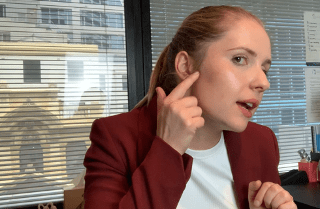Teeth Grinding

Neck Headache
July 24, 2020
Lower Back Pain
August 10, 2020Teeth Grinding

How To Stop Grinding Teeth ?
Teeth clenching and grinding (also called bruxism) often starts as a response to stress and anxiety. Consequently, we start seeing it at the tail end of high school, in university and at the beginning of our first jobs when stress levels of study and work dominate our lives. It then becomes habitual in some people occurring even when their stress is low and becoming a significant problem when their stress increases. It doesn’t cause symptoms in a vast majority of people but can perpetuate many silent TMJ issues (jaw joint), contribute to headaches and wear the teeth down with time.
As with all teeth-related anything- it is important that we get a dentist on board. Some teeth clenching and grinding can be as a result of abnormal bite, teeth alignment or sleep apnoea (as your mouth looks for a position to help get oxygen in). Because the vast majority of grinding occurs overnight, the first symptoms are often a bed partner reporting it; or a sore, tired and tight jaw first thing in the morning.
Chronic grinders and clenchers may notice crossing teeth, cracking or chipping teeth, changing of their bite and wearing down of the teeth surfaces themselves. Your bite alignment is incredibly important to keep tabs of as your teeth and bite form a “tripod” of support for your jaw joints with 3 points of contact in the mouth. Your teeth should have equal contact on the back 2 sides (the molars) and the front teeth (these 3 contact points forming the 3 legs of the tripod). So, if you are unevenly wearing the tripod (grinding more heavily on one side, or physically moving your teeth) you can alter the loads placed through the jaw bones exacerbating a TMJ issue. This is why I always ask about most recent dental visits etc. as alignment and changing of the bite are outside of my clinical area!
So how do I stop grinding my teeth?
Most people will be told by their doctors or dentists to “just stress less!”, cut alcohol and coffee and “relax more”. I hate this advice; I will never tell someone to eliminate coffee or tell someone to “just relax” – makes me stressed at the thought of someone saying that to me! But to a degree, they are right. The first step is breaking the cycle (which can be physio or dentist led,) and may include getting some stress management strategies under your belt. Some people find benefit with magnesium supplements during periods of high stress, and this is something I always recommend to my patients as a first step. It can help decrease any tension and along with a couple of other strategies, can form part of a holistic stress management approach.
My go to is always a self-facial release. Applying myofascial release, trigger pointing, foam rolling etc. to tight muscles can temporarily “down train” them by up to 30% for up to 48 hours. Same goes for the face!
To splint or not to splint?
Other options include wearing a custom splint from the dentist. This unloads the disc in the TMJ by about 2mm, holding the teeth in the same place so the pressure does not move them. It also helps keep the bite in the right position. TMJ and grinding splints range from a couple of hundred dollars to a couple of thousand depending on what you specifically need. I always tell my patients that a splint that can last upwards of a decade is cheaper than a mouth full of crowns and caps because you’ve worn your teeth down to nubs, or a set of adult braces because you’ve moved your teeth over time! I personally have worn a splint at night since my late teens because I chipped my front tooth at 17 by some intensive grinding! Over the pandemic period I have worn deep grooves in it and when I next visit the dentist I’ll get them to check it for fissures (a sign it is about to break) and top it up before I wear through it.
Do I need Botox?
So, someone has recommended that you try some Botox in your masseter muscles. This can work for some people but must always be approached with caution. In a few patients it can be a circuit breaker, breaking the whole grinding/ clenching cycle but this is rare. Too often I see patients who have been over injecting a side of their face because of ongoing tension, causing the muscles to become overly weak and now we’re dealing with a TMJ issue due to the weakness! Often someone comes in with what they describe as “tension” in the jaw but in reality, the problem side is the OTHER SIDE causing a traction in the painful side! If you then inject the tractioned side (which often feels painful, achy, and “tight”) you perpetuate the cycle by allowing the overactive muscle to continue take over. If you are considering Botox into the jaw muscles it is always worth a physio treatment first to see if there are any conservative measures that can be taken, or any targeted muscle retraining to balance the jaw and restore symmetry at the same time.
What else can I do?
As with any tight and sore muscle- heat is always helpful. Heat packs to face, hot showers running over the jaw and neck muscles can be a helpful first line of at home treatment. Additionally, anti-inflammatory medications used appropriately can assist with any muscle or joint soreness. But when in doubt- visit your Dentist or Expert Physiotherapist for a full assessment and targeted rehab program! Call us Now

